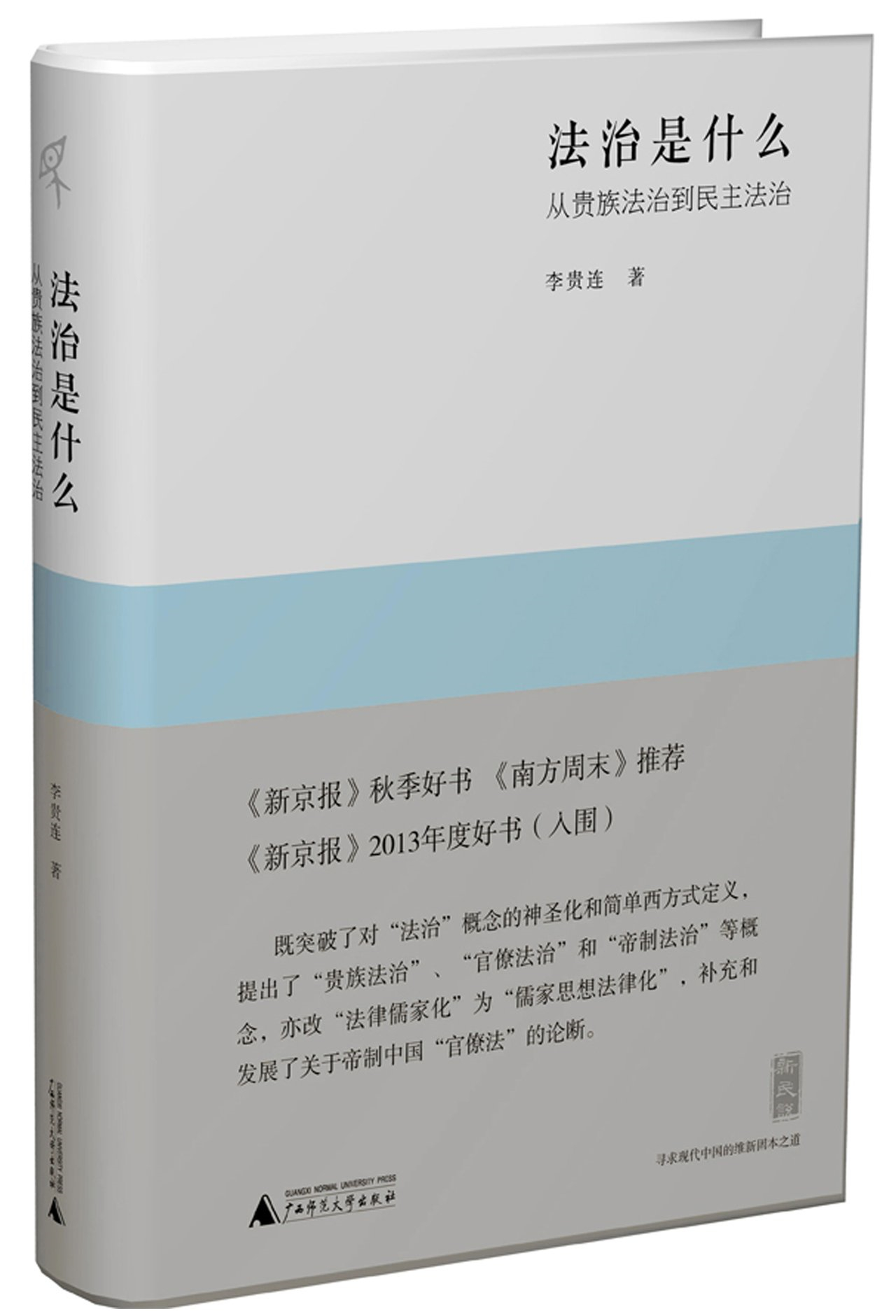Evolution of Chinese law and governance

What is Rule of Law: From ‘Rule by Rites’ to ‘Rule of Law’
Author: Li Guilian
Publisher: Guangxi Normal University Press
What is Rule of Law: From ‘Rule by Rites’ to ‘Rule of Law’ reinterprets the history of law in the context of ruling systems in China from ancient to modern times. The author, Li Guilian, does not define the ancient method of governing in China as simply the “rule of man,” as this does not sufficiently describe the complexity of Chinese legal systems, and using this term makes it harder to understand the origins of the rule of law in China.
The “legal system” Chinese rulers, usually the emperors, used for governance was different from the rule of law in the West, quite often leading to the misunderstanding that a legal system did not exist in ancient Chinese society. As such, it is more appropriate to use the term “legal ruling system” to refer to a variety of systems that used laws to support rule, instead of “rule of law” or “rule of man.”
China’s rule of law evolved from what was originally “rule by rites.” The rite system of the Zhou Dynasty (1046-256 BC), which was established on the state ownership of land, was the code of conduct for aristocrats. The core of “rule by rites” was about treating people according to their status at birth, with the intention of maintaining the patriarchal clan system.The rites system in the Zhou Dynasty succeeded in consolidating power. However, during the Spring and Autumn period (770-476 BC) and the Warring State period (476-221 BC), the system was corrupted by social chaos and decaying morality.
After that, Confucian scholars sought a new ruling system by introducing “benevolence” into the rites system. Also, during this period, the Legalists denied the divine rights of the king and opposed the privileges of the aristocracy, claiming that the law should reflect the will of ordinary people and remove the aristocracy’s hereditary inheritance of land and power. They compared the law to weights and measures, which would balance interests, regulate behaviors, unify measurement and settle disputes. They also contended that the law is the principle which guides people’s behavior and the ruling tool that helps to maintain social order and morality. The Legalists paid great tribute to legal enforceability while disapproving of the influence of morality, holding that “rule by saints and intellectuals” is not reliable. However, Confucius did not separate “rule by rites” from the “rule of law” and said that the former is the premise of the latter. From the system of enfeoffment of the Zhou Dynasty to the system of prefectures and counties that took shape during the Spring and Autumn period and the Qin (221-207 BC) Dynasty, there was a coexistence of “rule by rites” and “rule of law.”
A new ruling system featuring emperors’ “rule by law” was gradually introduced after the Qin and Han (206 BC - AD 220) dynasties. Li argued that it would be careless to describe the ruling system during this period to simply be the rule of man. Equating the “legal ruling system” with the “rule of man” is unfair as it neglects the practice of legal rule since ancient times in China. Ancient Chinese politics had different ways of confining power from those of the West, demonstrating political complexity and the different origins of the legal ruling system. The rule of law is an outcome of historical development, not logical evolution. Therefore, it should be treated as a historical phenomenon when analyzing the development of legal system.
